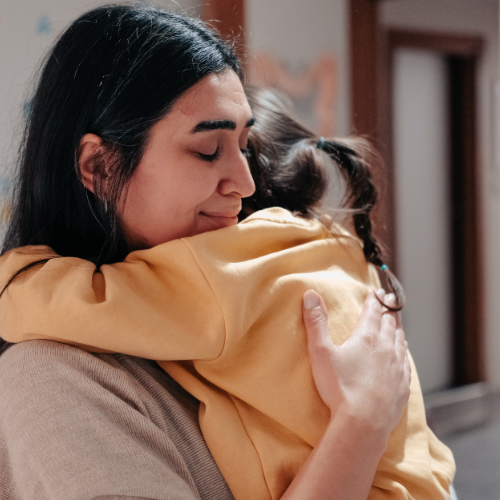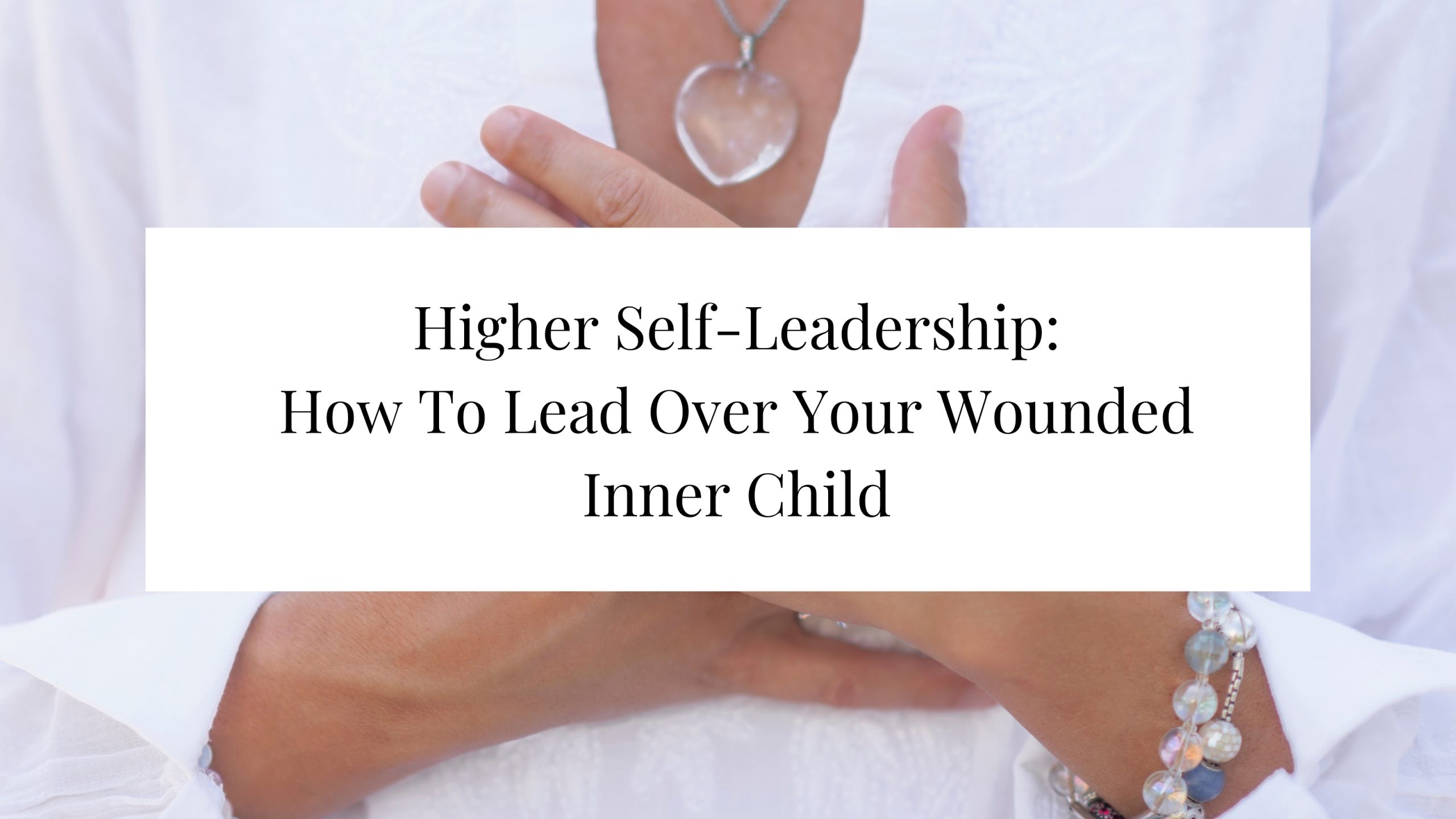Higher Self Leadership: Lead Over Your Inner Child
Higher self leadership is an empowering concept, and it helps you live a life that resonates with your most authentic self. By taking the steps towards self-leadership, you’re taking the first step towards not just healing, but thriving, transcending the limitations your wounded inner child might impose.
I wrote this article to illuminate your path to personal fulfilment and resilience. You’ll discover practical steps to let your higher self guide you, soothing the echoes of past pains and leading towards a future brimming with possibility and peace.
Understanding Your Wounded Inner Child
The concept of the inner child is not just a poetic metaphor; it is a powerful psychological construct that reflects the deep-seated emotions, experiences, and needs we’ve carried from our earliest years into adulthood.
The Concept of the Inner Child
Our inner child resides in the core of our being, holding the joys, fears, traumas, and hopes of our younger selves. It’s the part of us that, despite growing up, remains tender and in need of care and validation. This aspect of our psyche encapsulates the innocence and vulnerability we’ve all once embodied.
Understanding our wounded inner child involves recognising how these early experiences, particularly those marked by emotional neglect or trauma, continue to influence our adult lives, affecting our self-esteem, relationships, and even career choices.
Signs Your Wounded Inner Child Is Leading
Recognising when our wounded inner child is taking the reins is a critical step towards self leadership. Here are some indicative signs that your inner child might be in control:
- Overwhelming Emotions: Feelings of anger, sadness, or fear that seem disproportionate to the situation at hand may suggest unresolved inner child issues.
- Avoidance Behaviours: Procrastination, substance abuse, or escapism through excessive use of technology can be mechanisms to avoid facing painful memories or feelings.
- Challenges in Relationships: Difficulty in establishing or maintaining healthy relationships, or repeatedly finding oneself in unhealthy dynamics, often mirrors unresolved childhood needs or traumas.
- Self-Sabotage: Repeated patterns of sabotage in personal or professional contexts may be a sign of an inner child’s fear of success, stemming from deep-seated feelings of unworthiness.
Recognising these signs is not about blaming ourselves or our past experiences. Instead, it’s about nurturing a compassionate understanding of our behaviours and emotions. This understanding paves the way for healing, allowing us to gently guide our inner child towards a sense of safety and belonging, under the wise leadership of our higher self. By practising forgiveness and acceptance, we can lead over our wounded inner child and experience our True Nature.
Through this compassionate introspection, we lay the foundation for a future where our decisions and actions are aligned with our truest intentions and highest aspirations.

Embracing Your Higher Self
The journey of self leadership invites us to forge a deeper connection with our higher self, that aspect of our being that stands in stark contrast to the wounded inner child. Some people also refer to it as the ‘Inner self’ or the ‘God-self’. It’s the part of us that remains connected to the Divine, the Source.
It represents our most enlightened state, embodying wisdom, compassion, and an unshakeable sense of inner peace. Embracing your higher self means stepping into a realm of boundless potential, where the limitations imposed by past hurts begin to dissolve in the light of awareness and compassion.
What are the Characteristics of the Higher Self?
The higher self is not a distant or elusive presence; it’s a part of every human being ever born. It’s an intrinsic part of who we are, though often overshadowed by the louder voices of our fears and conditioned responses.
It knows your true purpose and guides you along your spiritual journey. Key characteristics include:
Unconditional Love
Unlike the critical inner voice that may dominate our psyche, the higher self offers unconditional love and acceptance, encouraging us to extend the same compassion to ourselves and others.
Deep Inner Peace
The higher self resides in a state of profound peace, undisturbed by external chaos or internal turmoil. This peace isn’t the absence of challenges but stems from a steadfast trust in one’s ability to navigate life’s storms.
Intuition and Wisdom
Guided by a profound connection to one’s intuition, the higher self sees beyond surface appearances, offering insights that align with our true path and purpose.
Benefits of Letting Your Higher Self Lead
When we allow our higher self to guide our thoughts and actions, the benefits permeate every aspect of our existence:
- Enhanced Emotional Resilience: Embracing the higher self equips us with the emotional strength to face life’s challenges with grace, viewing obstacles as opportunities for growth.
- Authentic Relationships: By leading with our higher self, we attract and nurture relationships that reflect our truest values and desires, fostering genuine connections built on mutual respect and understanding.
- Purposeful Living: Guided by the higher self, our choices and actions become more intentional, aligning with our deepest aspirations and contributing to a sense of meaning and fulfilment in our lives.
- Healing and Transformation: The higher self’s perspective helps us to see our past, including our wounds, in a new light, facilitating deep healing and personal transformation.
Embracing your higher self isn’t a destination but a continuous journey of growth and discovery. It involves daily practices of mindfulness, reflection, and conscious choice-making, all geared towards cultivating a life that truly reflects your highest potential.
As we learn to let our higher self lead, we unlock the door to a richer, more fulfilling experience of life, marked by a profound sense of harmony within ourselves and with the world around us.
This transformational shift not only heals our wounded inner child but also empowers us to live with an open heart, embracing each moment with courage, love, and joy.

The Science Behind Higher Self Leadership
Although the concept originates from ancient practices and techniques, it has become a core idea in contemporary popular spirituality, particularly within the New Age movement. Psychology and neuroscience offer compelling insights into how practices related to self-leadership can profoundly impact our mental, emotional, and physical well-being.
Psychological Foundations
At the heart of self leadership is the concept of self-regulation, a principle well-documented in psychological research. Self-regulation refers to our ability to manage our thoughts, emotions, and behaviors in pursuit of our long-term goals.
Studies in cognitive psychology suggest that strong regulation skills are linked to improved mood stability, higher levels of personal satisfaction, and better achievement outcomes.
Neuroscience Insights
Neuroscience has shed light on how self-leadership practices like mindfulness meditation can actually rewire the brain. Research using functional magnetic resonance imaging (fMRI) has shown that regular meditation can increase the density of grey matter in regions of the brain associated with awareness, compassion, and introspection.
It can also reduce activity in the amygdala, the area of the brain responsible for fear and stress responses. These changes not only bolster our emotional resilience but also empower us to lead from a place of calmness and clarity.

The Role of Emotional Intelligence
Emotional intelligence (EI), the ability to identify, understand, and manage our own emotions and those of others, is another critical component of self-leadership. Research in this area highlights how higher levels of emotional intelligence are correlated with better leadership skills, more positive relationships, and improved mental health.
By fostering our emotional intelligence through practices like empathy and active listening, we enhance our self-leadership capabilities, enabling us to navigate life’s challenges with greater ease and insight.
Implications for Healing the Wounded Inner Child
The science behind self leadership also extends to the healing of our wounded inner child. Psychological theories, such as attachment theory, illustrate how early childhood experiences shape our adult relationships and self-concept. By applying principles such as mindfulness and self-compassion, we can heal these early wounds, reprogramming our responses to stress and fostering a more nurturing internal environment for our inner child.
Understanding the science behind self leadership not only validates the importance of this work but also provides a solid foundation upon which we can build our practices. It bridges the gap between ancient wisdom and modern science, offering a holistic approach to personal development and well-being
As we continue to explore and integrate these practices into our lives, we empower ourselves to lead with intention, wisdom, and heart, guided by both the light of understanding and the evidence of science.
Practical Steps Towards Self Leadership
Embarking on the path of self leadership involves more than just understanding the concepts of the inner child and the higher self. It requires actionable steps that you can incorporate into your daily life to cultivate a strong sense of self-guidance and empowerment.
Lean Into Your Spirituality with Mindfulness
Mindfulness is a cornerstone of self leadership, offering a way to stay present and engaged with our inner experience without judgment. Through mindfulness, we can observe our thoughts and emotions, recognizing when the inner child’s fears are at play and gently redirecting our focus towards our higher self’s wisdom.
While not guaranteed to result in a spiritual awakening, these practical strategies help you connect with your spirituality and lean into self-leadership, fostering a nurturing environment for your higher self to flourish and guide your wounded inner child towards healing:
Meditation and Relaxation
Allocate a few minutes each day to sit in stillness, focusing on your breath. This practice helps to calm the mind, making it easier to connect with your higher self. If you have never meditated before, I have a guided meditation on youtube that will help you gain the building blocks required to practice mindfulness and meditation.
Mindful Walking and Yoga
Turn routine walks and yoga exercises into mindfulness exercises by fully immersing yourself in the experience, noticing each step, the breath, and the surrounding environment.
Journaling
Keep a journal to reflect on your daily experiences, emotions, and thoughts. This can be a powerful tool for discovery and understanding the dynamics between your inner child and higher self.
Building Emotional Resilience
Developing emotional resilience is crucial for navigating life’s ups and downs with grace and confidence. By strengthening your emotional resilience, you can better manage stress and bounce back from setbacks, allowing your higher self to lead with compassion and wisdom. Here are ways to build emotional resilience:
- Cultivate a Positive Mindset: Practice gratitude by acknowledging the good in your life. This shifts focus from what’s lacking to the abundance present, fostering a positive outlook.
- Establish Healthy Boundaries: Learn to say no and set limits that protect your energy and well-being. Healthy boundaries prevent burnout and honour your needs and values.
- Seek Support: Don’t hesitate to reach out to friends and family, or invest in coaching for support when needed. Sharing your journey can lighten your load and provide new perspectives.
Integrating the Higher Self and Healing the Inner Child
Merging the wisdom of your higher self with the needs of your wounded inner child is a delicate balance that requires patience and practice. Here are some steps to facilitate this integration:
- Dialogue with Your Wounded Inner Child: Set aside quiet time to connect with your inner child. You might use visualization to create a safe space where you can listen to and reassure this part of yourself, some people also imagine their inner child as a physical body, affirming its needs and emotions.
- Practice Self-Compassion: Treat yourself with kindness, especially during difficult moments. Remind yourself that you’re doing your best and that it’s okay to be imperfect.
- Embrace Creativity: Engage in creative activities that bring you joy and fulfilment. Creative expression can be a healing process, allowing both your higher self and inner child to communicate and heal.
By incorporating these practical steps into your daily life, you embark on a meaningful journey towards self leadership.
Don’t be discouraged if you do not connect with your spiritual self the first time. Connection may come through in subtle ways, such as a sense of peace or an inner knowing. This journey not only fosters a harmonious relationship between your higher self and wounded inner child but also paves the way for a life led by purpose, joy, and profound inner peace.

Overcoming Common Obstacles to Self Leadership
Embarking on a journey towards self leadership and inner healing is both rewarding and challenging. Along the way, we may encounter obstacles that seem to hinder our progress. These barriers, however, offer valuable lessons and opportunities for growth.
By recognizing and addressing these common obstacles, we can continue our journey with resilience and determination.
Fear of Change
One of the most significant barriers to self leadership is the fear of change. Embracing the unknown can be daunting, as it challenges our comfort zones and confronts us with our deepest insecurities. Overcoming this fear begins with acknowledging it.
By gradually stepping out of our comfort zones and celebrating small victories, we reinforce our capacity to adapt and grow. Mindfulness practices can also be instrumental in helping us stay present and engaged, reducing the overwhelming nature of change.
Lack of Support
Another challenge is the perceived lack of support from our social environment. The path to self leadership is deeply personal, yet it’s natural to seek validation and encouragement from others. When support seems scarce, it’s essential to seek out like-minded communities, whether online or in person, where experiences and aspirations can be shared.
Remember, the most crucial support comes from within, from the nurturing dialogue we foster with our higher self and inner child.
Deep-Seated Trauma
For many, deep-seated traumas from the past pose a substantial obstacle to self leadership and healing. These experiences can embed patterns of fear, avoidance, and self-doubt that seem insurmountable. Addressing deep-seated trauma often requires professional guidance from therapists or coaches trained in trauma-informed care.
Healing from trauma is a gradual process, involving the development of trust, safety, and resilience. It’s a journey of reclaiming one’s power and voice, step by step, in a supportive and understanding environment.
Overwhelm and Burnout
The pressures of daily life can lead to overwhelm and burnout, making it difficult to maintain focus on our self-leadership goals. Managing this challenge involves setting clear boundaries, prioritising self-care, and practising time management strategies that align with our values and needs.
It’s also important to remember that it’s okay to ask for help and to take breaks when needed. Self leadership is not about relentless personal growth, but about cultivating a balanced and fulfilling life.
Internal Resistance
Lastly, internal resistance, often manifesting as procrastination or self-sabotage, can derail our efforts towards self-leadership. This resistance usually stems from underlying fears or beliefs about our worthiness and capabilities. To overcome internal resistance, it’s vital to reflect, exploring the roots of these feelings and gently challenging them with compassion and understanding.
Affirmations and visualizations can be powerful tools for reinforcing a positive self-image and breaking through the barriers of resistance.

Overcoming these obstacles is an integral part of the journey towards self-leadership and healing. Each challenge presents an opportunity for deeper self-awareness, growth, and transformation. By facing these obstacles with courage and compassion, we pave the way for a life led by our higher self, full of purpose, joy, and inner peace.
Embracing Self Leadership
Embracing self-leadership is not just achieving personal milestones or overcoming external challenges; it’s a profound journey of inner discovery and healing.
By understanding and nurturing our inner child, and allowing our higher self to guide us with divine energy, we can let go of our emotional baggage and unlock the doors to a life of emotional resilience, purposeful living, and deep, authentic connections. Now is the time to explore what we can surrender or let go of, and lead over our inner child towards a brighter future.
The steps towards self leadership we’ve discussed are invitations to a more fulfilling life. A life where each moment is met with mindfulness, each challenge with resilience, and each decision with the wisdom of our higher self. This journey requires patience, compassion, and a willingness to embrace the complexities of our inner world.
But the rewards—inner peace, self-acceptance, and the freedom to live in alignment with our true nature through personal growth—are immeasurable.
The Empowered Woman Coaching Program
Are you ready to embrace the power of self-leadership? To step into a life led by your higher self, marked by emotional freedom and fulfilment?
Rooted in building Self-Leadership, the Empowered Woman coaching program will support you in developing the profound ability to understand yourself and curate your dream life, beyond past wounds and protective mechanisms.
Guided by a heart-centred, no-nonsense approach, the program involves pragmatic coaching, heart-centred therapy, skill-building, and self-directed learning.
If you’re seeking personalised support, please don’t hesitate to reach out for a coaching session. Together, we can explore the depths of your inner world, unlocking the doors to a life of harmony, purpose, and profound happiness.
Remember, the journey towards self-leadership is yours to embark upon, and the steps you take now pave the way to a future brimming with potential and peace. Let your higher self lead the way.







